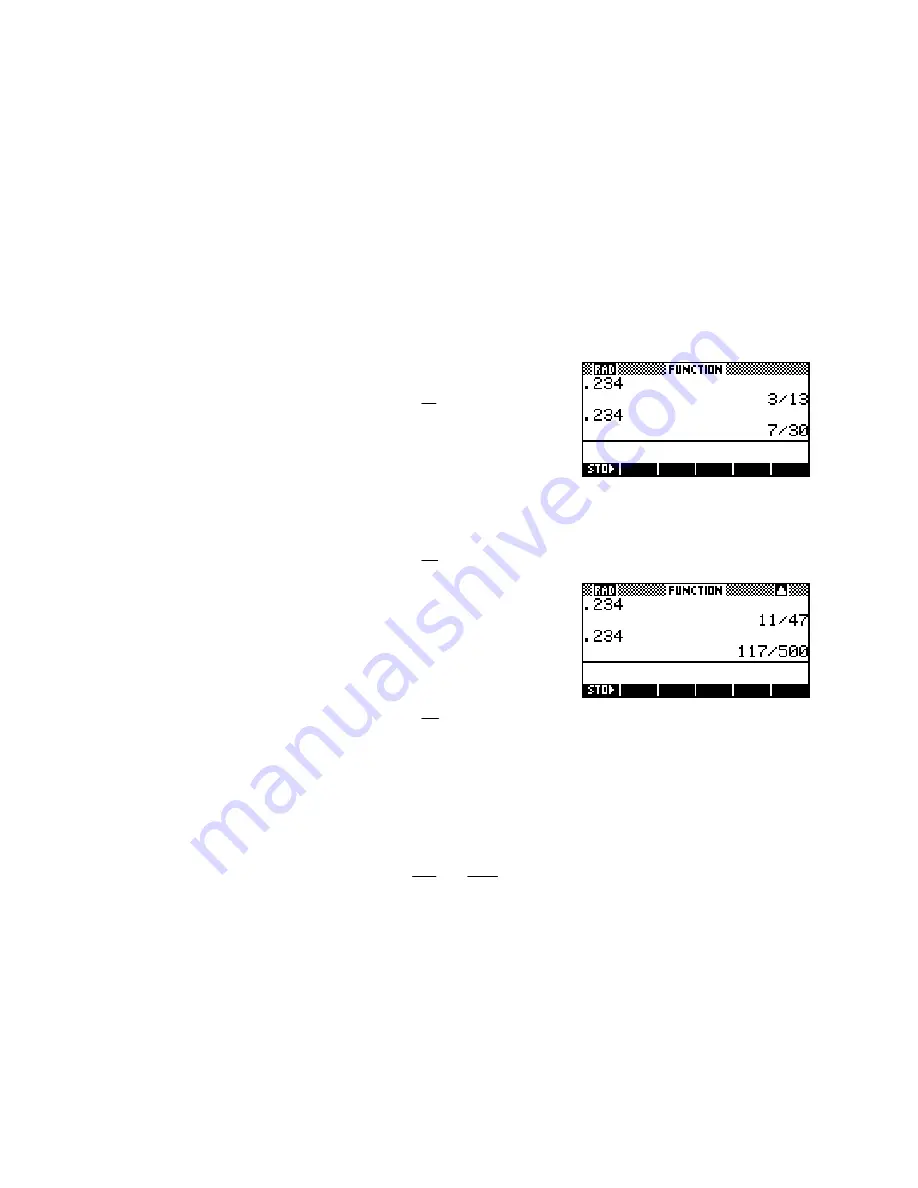
The second point to remember involves the method the hp 39gs and hp 40gs use when converting decimals to
fractions, which is basically to generate (internally and unseen by you) a series of continued fractions which
are
approximations
to the decimal entered. The final fractional approximation chosen for display is the first
one found which is ‘sufficiently close’ to the decimal. Look up ‘continued fractions’ on the web or in a
textbook if you don’t know what these are.
The trap lies in what constitutes ‘sufficiently close’, and this is determined by the ‘
4
’ in
Fraction 4
. Very
roughly explained, the calculator will use the first fraction it finds in its process of approximation which
matches the decimal to that number of significant digits.
For example, a setting in the
MODES
view of…
Fraction
1
3
changes 0.234 to
13
which is actually 0.2307692…
(matching to at least 1 significant figures.)
Fraction
2
7
changes 0.234 to
30
which is actually 0.2333333…
(matching to at least 2 significant figures.)
Fraction
3
11
changes 0.234 to
47
which is actually 0.2340425…
(matching to at least 3 significant figures.)
Fraction
4
117
⎛
234
⎞
changes 0.234 to
500
⎝
⎜
or
1000
⎠
⎟
which is exactly 0.234
(thus finally matching to the required 4 significant figures.)
Essentially, the value of
4
in
Fraction 4
affects the degree of precision used in converting the decimal to a
fraction. As was said earlier, the calculator will use the first fraction it finds in its process of approximation
which matches the decimal to that number of significant digits.
34






























